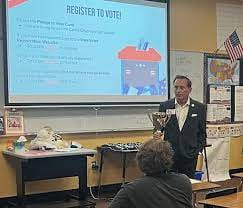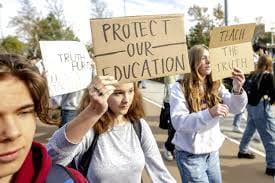
The government should provide college tuition for students who meet the financial and academic standards. Not only will these decrease the income inequality that is becoming more prevalent in America, they will also encourage students to pursue higher education and ultimately create a more educated population.
White citizens make up 42% of the undergraduate population. This means out of all the college students nationwide, only 58% are racially diverse. Furthermore, white citizens are consistently far more likely than any other race to graduate and obtain a degree. Studies and reports have shown that the financial burden faced by many racially diverse students is to blame for this large gap. This financial burden creates a grueling cycle; racially diverse students are unable to obtain a degree, which results in those individuals making consistently less money than their white counterparts and placing their children in similar situations. This is why the government must help provide a college education to low-income students.
Few instances have proven that government-funded tuition would help solve the racial wage gap. One plan was drafted by Obama during his presidency that would mimic that of the state of Tennessee. This plan has allowed students to attend community college for free. Tennessee alone has observed the positive consequences of this plan, including an increased number of students who pursue a college education and an increased number of African-American and Hispanic students who can attend college.
Another success story of government-funded college tuition is Chile’s gratitude law. Direct quotes from families who have relied on government funding to send their children to college show the opportunities a law like this would create in America. Chile’s funding is directed towards low-income students as providing funding for everyone would create astronomical costs.
Another benefit of aiding low-income students with the finances of college tuition as it encourages students to obtain higher education and creates a better-educated society. A study conducted by the College Board shows that higher levels of education directly relate to lower levels of unemployment and poverty, decrease the need for social support programs, and increase the number of taxpayers. So essentially, by increasing the number of students obtaining college degrees, the government is funneling the money it spent on aid back in.
It is truly unfortunate the number of kids who cannot pursue a higher education merely because of the cost of tuition. However, plans such as Chile’s and Obama’s show how beneficial government funding for college tuition can be for students who could never dream of a college education. By implementing a law like this, we could effectively decrease the income inequality issue, as it would aid low-income students to achieve their full potential.
Davis, Julie Hirschfeld, and Tamar Lewin. Obama Plan Would Help Many Go to Community College Free . The New York Times, 9 Jan. 2015,
“What The U.S. Can Learn From Free College In Chile.” All Things Considered (NPR), Nov. 2019. EBSCOhost, research.ebsco.com/linkprocessor/plink?id=0e6c5f1a-5901-3af9-848d-e9d69a80c552.

